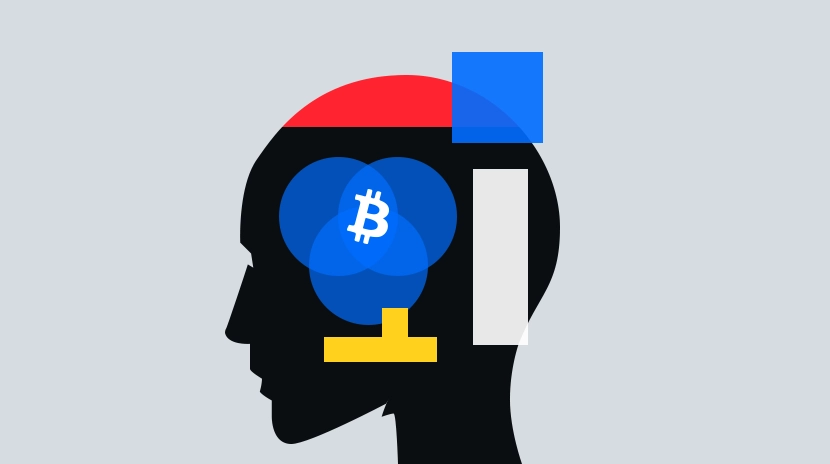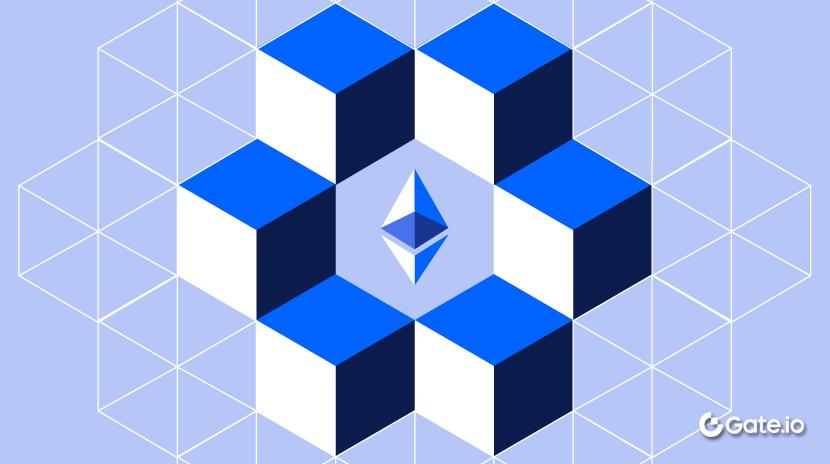مقارنة منصة إطلاق عملة MEME
مقدمة
في السنوات الأخيرة ، أصبحت رموز Meme تدريجيا نقطة بارزة رئيسية في مجال العملات المشفرة ، خاصة تحت تأثير وسائل التواصل الاجتماعي والاتجاهات التي يحركها المجتمع. على عكس العملات المشفرة التقليدية ، تنبع قيمة رموز Meme بشكل أساسي من الجاذبية العاطفية وديناميكيات المجموعة بدلا من التطبيقات التكنولوجية أو طلب السوق. تعكس هذه الظاهرة نموذج "اقتصاد الاهتمام" النموذجي ، حيث تجذب رموز Meme انتباه الجمهور وتستفيد من النشر الواسع للمنصات الاجتماعية لتصبح محور اهتمام المستثمرين بسرعة.
يتميز سوق Meme token حاليا بموضوعات متعددة ، بما في ذلك الروايات الحيوانية والسياسية والروايات التي تحركها الذكاء الاصطناعي. تعتمد هذه الرموز على ثقافة meme والاتجاهات الاجتماعية والزخم الذي يحركه المجتمع ، مما يجعلها واحدة من أكثر القطاعات تسلية ومضاربة في سوق التشفير. يدور موضوع علم ، الذي يمثله PEPE و WIF ، باستمرار من خلال دورات الاتجاه من خلال الاستفادة من الفكاهة والمشاركة المجتمعية المرتبطة بصور. من ناحية أخرى ، ارتفعت شعبية الموضوع السياسي بسبب أحداث مثل الانتخابات الرئاسية الأمريكية. ومع ذلك ، فإنه غالبا ما يشهد انخفاضا سريعا في الاهتمام بسبب طبيعته المعتمدة على الحدث. يتبع موضوع الذكاء الاصطناعي طفرة الذكاء الاصطناعي العالمية ، حيث تقود مشاريع مثل GOAT صعود روايات جديدة. وفي الوقت نفسه ، ظهرت أيضا موضوعات ناشئة مثل الفن والعلوم بدعم من منصات إطلاق الرمز المميز ، مما يوفر منطقا استثماريا جديدا وإمكانات للسوق.

تصنيف مفهوم ميم وحدود سوق العملات (المصدر: أبواب البحث)
أدت مشاركة المشاهير إلى زيادة الضجيج حول رموز Meme. على سبيل المثال ، ذكر الرئيس التنفيذي لشركة Tesla Elon Musk مرارا وتكرارا Dogecoin على وسائل التواصل الاجتماعي ، مما أدى إلى ضخ زخم إضافي في السوق وجذب اهتمام واسع النطاق من المستثمرين العالميين ووسائل الإعلام. حدثت ظواهر مماثلة مع "عملات المشاهير" الأخرى ، حيث تطلق شخصيات بارزة رموز Meme المتعلقة بأنفسهم لزيادة التعرض والمناقشة. أطلق كل من الرئيس الأمريكي السابق دونالد ترامب وزوجته ميلانيا ترامب رموز ميمي الخاصة بهما. لم تحظ هذه الرموز المميزة باهتمام كبير في فترة قصيرة فحسب ، بل أثارت أيضا مناقشات مستفيضة حول تقاطع السياسة والشخصيات العامة والعملات المشفرة.
لماذا تزدهر منصات إطلاق عملة MEME؟
قبل ظهور منصات إطلاق رمز Meme ، واجه إصدار رموز Meme العديد من التحديات ، مما جعل من الصعب على المستخدمين والمبدعين العاديين المشاركة في السوق بسلاسة. أولا ، كان الحاجز التقني مرتفعا. يحتاج المبدعون إلى امتلاك مهارات برمجة العقود الذكية ونشر العقود يدويا وإدارة السيولة ووضع آليات التداول ، وهو أمر صعب للغاية بالنسبة للمستخدمين الذين ليس لديهم خلفية برمجية. ثانيا، هناك احتياجات مالية وموارد عالية. يتطلب إصدار الرمز المميز التقليدي عادة رأس مال كبير لبدء التشغيل ، بما في ذلك رسوم نشر العقود وأموال التسويق والسيولة الأولية ، مما يجعل من الصعب على المبدعين الأفراد والفرق الصغيرة دخول السوق. وعلاوة على ذلك، كانت المخاطر الأمنية شديدة. غمر سوق Meme token المبكر بالعديد من مشاريع "Rug Pull" ، حيث سحبت فرق المشروع الأموال بسرعة بعد إصدار الرمز المميز ، مما تسبب في خسائر كبيرة للمستثمرين. بالإضافة إلى ذلك ، كان توزيع الرمز المميز غير عادل في كثير من الأحيان. أجرت العديد من رموز Meme مبيعات خاصة أو تخصيصات محجوزة للفريق قبل الإصدار ، مما أدى إلى سيطرة المالكين الأوائل على جزء كبير من العرض. هذا جعل أسعار السوق عرضة للتلاعب ، مما وضع مستثمري التجزئة في وضع غير مؤات. وفي الوقت نفسه، كانت إدارة السيولة معقدة. كان على فرق المشروع إدارة مجمعات السيولة بأنفسهم ، وأي خطأ يمكن أن يؤدي إلى تقلبات شديدة في الأسعار ، مما يقوض ثقة المستثمرين. مع استمرار ارتفاع شعبية رموز Meme ، قدم ظهور منصات إطلاق Meme token اللامركزية حلا جديدا للمبدعين والمستثمرين. عالجت هذه المنصات بشكل فعال أوجه القصور في نماذج الإصدار التقليدية وقدمت المزايا التالية:
1. أمان محسّن للتخفيف من مخاطر سحب البساط
تستخدم المنصات اللامركزية العقود الذكية وآليات منحنى الترابط لضمان تقلب أسعار الرمز المميز بناء على طلب السوق بدلا من التحكم فيها من قبل عدد قليل من الأفراد. تعمل هذه الآلية على تحسين شفافية الأسعار ، وتقليل مخاطر التلاعب ، ومنع هذا النوع من عمليات الاحتيال التي ابتليت بها النظم البيئية مثل مشاريع Solana "الدفع مقابل النعناع". نتيجة لذلك ، يتم حماية مصالح المستثمرين بشكل أفضل.
2. تخفيض حواجز الإصدار وتبسيط العمليات
توفر هذه المنصات أدوات إصدار الرموز الآلية، مما يتيح للمبدعين إطلاق رموز MEME الخاصة بهم دون الحاجة إلى مهارات البرمجة أو الأموال الكبيرة. بالإضافة إلى ذلك، تبسيط آليات إدارة السيولة وحرق الرموز المدمجة يبسط العمليات بشكل أكبر، مما يتيح للمبدعين التركيز على الإبداع والتسويق بدلاً من التحديات الفنية.
3. نمو المجتمع وتوسيع النظام البيئي
تجذب الحواجز المنخفضة للدخول ونماذج التوزيع العادلة لمنصات إطلاق عملات الدمى اللامركزية عددًا كبيرًا من الأشخاص الذين يخلقون والمستثمرين. مع تزايد جاذبية هذه المنصات، تتوسع نظمها البيئية، مما يخلق المزيد من فرص الاستثمار، ويعزز حجم تداول العملات، ويدفع دورة نمو إيجابية.
4. آليات الإطلاق العادلة لمنع التلاعب في السوق
على عكس الإطلاقات التقليدية للرموز التي تعتمد على المبيعات الخاصة أو تخصيصات الفريق، تستخدم منصات إطلاق الرمز Meme عادة آلية إمداد ثابتة بدون ما قبل البيع أو تخصيصات الفريق. يضمن هذا أن الجميع لديه فرصة متساوية للمشاركة، مما يمنع التلاعب بواسطة "الحيتان" وضمان أن الأسعار تحدد بواسطة الطلب السوقي بحت. يخلق هذا بيئة استثمارية أكثر عدلاً لجميع المشاركين.
نمو العملات الميمي مرتبط تماما بارتفاع منصات الإطلاق الابتكارية. تقلل منصات الإطلاق اللامركزية من حواجز الدخول للمبدعين والمستثمرين وتحسن عملية إصدار العملة المشفرة من خلال التشغيل التلقائي، مما يضمن إدارة سيولة أكثر كفاءة. مع ظهور منصات متعددة، أصبح إصدار العملة الميمي أكثر تنوعًا، مما يعجل من نمو السوق بشكل أكبر. فيما يلي، سنستكشف بعض من أكثر منصات إصدار العملة الميمي المعروفة ونحلل أدائها السوقي.
مقدمة عن منصات إطلاق الرموز المختلفة
Pump.fun: نظرة عامة على المنصة والأداء
مقدمة المنصة
Pump.fun هي منصة لامركزية مصممة لإنشاء وتداول رموز MEME على سلسلة الكتل سولانا. تتيح المنصة للمستخدمين إنشاء رمز Meme الخاص بهم بسهولة من خلال تقديم تفاصيل أساسية مثل اسم الرمز والرمز التعبيري والوصف والصورة الرمزية. بالإضافة إلى ذلك، يمكن للمستخدمين تداول الرموز التي تم إنشاؤها من قبل الآخرين مباشرة على المنصة.
تستخدم Pump.fun آلية منحنى الربط، مما يعني زيادة أسعار العملات المشفرة مع ارتفاع الطلب. تحفز هذه النظام المستثمرين المبكرين من خلال السماح لهم بكسب مكافآت أكبر كلما ارتفعت شعبية العملة المشفرة.

واجهة المنتج Pump.fun (المصدر:Pump.fun)
يعتمد نموذج التسعير الخاص بPump.fun على منحنى المنتج الثابت، الذي يحدد أسعار العملات المشفرة من خلال بركة السيولة الافتراضية. الصيغة الرئيسية التي تحكم هذا الآلية هي:
vTOKEN×vSOL=kvTOKEN \times vSOL = kvTOKEN×vSOL=k
حيث يمثل vTOKEN الاحتياطي الافتراضي للرمز المشغل، ويمثل vSOL الاحتياطي الافتراضي ل SOL، و k ثابت يحدد شكل منحنى السعر.
- في المراحل الأولى من دورة حياة العملة، يرتفع السعر ببطء.
- مع زيادة الطلب، يتسارع السعر إلى الأعلى، مما يشجع على المشاركة المبكرة من خلال مكافأة المشترين المبكرين بأسعار أقل وعوائد أعلى محتملة.
عملة and إدارة السيولة
- الإمداد الأولي للعملة: 1 مليار عملة لكل مشروع.
- احتياطي الرمز الافتراضي الأولي (vTOKEN): 1،073،000،000 رمزًا.
- الاحتياط الافتراضي الأولي لـ SOL الافتراضي (vSOL): 30 SOL.
مع زيادة الطلب في السوق، ترتفع أسعار العملات المشفرة، مما يدفع إلى زيادة نشاط التداول والسيولة.
إحدى الميزات الرئيسية لـ Pump.fun هي هجرة السيولة التلقائية. عندما يصل رأس المال السوقي لعملة معينة إلى 100،000 دولار، تقوم المنصة تلقائيًا بنقل السيولة إلى بركة السيولة Raydium. يُبسط هذا العملية التلقائية عملية إصدار العملة وإدارة السيولة، مما يخفض حواجز الدخول للمبدعين والمستثمرين.
أداء بيانات Pump.fun
حتى الخامس من فبراير 2025، تراكمت لدى Pump.fun أكثر من 2.76 مليون SOL في رسوم المعاملات، مما يعكس حجم التداول الضخم والتأثير في السوق. لقد أطلقت المنصة مجموعة من 7.5 مليون عملة، حيث تمت إدراج أكثر من 98,000 عملة بنجاح على Raydium.
بالمقارنة، شهدت قاعدة، ثاني أكبر نظام لإصدار عملات Token الممكّنة للتداول، إطلاق 953،300 عملة في عام 2024، مما يجعل حجم إصدار Pump.fun أعلى بمعدّل 7.86 مرة. وفقًا لـ DefiLlama، تحتل Pump.fun المرتبة التاسعة بين جميع بروتوكولات البلوكشين من حيث الإيرادات الإجمالية، مما يبرز زخمها القوي وموقعها كواحدة من أكثر البروتوكولات نشاطًا في سوق العملات المشفرة.

بيانات ذات صلة ببروتوكول Pump.fun (المصدر: بوابة البحث)
عدد الرموز التي تم إصدارها على Pump.fun وصلت مرارًا إلى ذروات جديدة، مما يظهر تقلبات دورية كبيرة. في بداية مارس 2024، نتيجة لهلع الرمز الساخر المحيط بـ BOME و Slerf، ارتفع إصدار الرمز بسرعة. ومع ذلك، تناقص الإصدار تدريجيا مع انخفاض سوق العملات الرقمية وضعف تأثير الضجة. بعد أكتوبر، مع ارتفاع السوق واستعادة قطاع الرمز الساخر، ارتفعت حجم الإصدار مرة أخرى، وصلت إلى ذروة قدرها 71،733 في 13 يناير 2025. وهذا يدل على الارتباط القوي بين إصدار الرموز ومشاعر السوق والمواضيع الرائجة.

إصدار الرمز اليومي لـ Pump.fun (المصدر: بوابة البحوث)
لقد أظهرت الرموز التي تم إطلاقها عبر Pump.fun زخمًا قويًا في حجم تداول Solana DEX. منذ مايو 2024 ، زاد حجم التداول بشكل مطرد، مع أداء قوي بشكل خاص في النصف الثاني من العام. في يناير 2025 ، بلغت نسبة الرموز التي تم إطلاقها بواسطة Pump.fun 46.10٪ من حجم تداول Solana DEX ، مع وصول حجم العمليات الشهرية إلى 11.917 مليار دولار ، مما يجعلها قوة دافعة رئيسية وراء نمو نظام البيئة لـ Solana DEX. نتيجة لذلك ، شهد حجم التداول الإجمالي لـ Solana DEX نموًا سريعًا ، متجاوزًا النظم البيئية الأخرى للبلوكشين وتأمين موقعه كزعيم في الصناعة.

حصة حجم التداول في Pump.fun (المصدر: بوابة البحث)
الرموز التي تنطلق بنجاح على المنصة غالبًا ما تجذب انتباه السوق بسرعة، مع تأثيرات ثروية ملحوظة. على سبيل المثال، ارتفع سعر Fartcoin بنسبة 105,118 مرة بشكل مذهل من سعر الإصدار الخاص بـ Pump.fun وحقق زيادة بنسبة 6,307 مرة من سعر السيولة الأولي على Raydium. وبالمثل، شهدت WOULD و arc مكاسب بنسبة 51,781 مرة و 36,391 مرة على التوالي، مجذبة للعديد من التجار المضاربين.
لم يقم هذا التأثير الثروة الضخمة بتحفيز حماس المستثمر فحسب، بل أيضًا أعاد تعزيز جو السوق المضطرب. الهياج الذي يدفعه الاحتكار قد زاد من قيم أسعار العملات وزيادة ملحوظة في مشاركة المستخدم.

تصنيفات قيمة السوق لعملات Pump.fun (المصدر: Pump.fun)
مقدمة منصة SunPump والبيانات
مقدمة منصة SunPump
SunPump هو أول Tron Meme Launchpad الذي تم إطلاقه بواسطة مؤسس Tron، Justin Sun. من خلال استغلال موارد النظام البيئي والدعم المروري الذي يوفره Tron، حصل SunPump بسرعة على صالح المستخدم في غضون بضعة أسابيع فقط، حيث تجاوزت حركة المرور والإيرادات مرة واحدة Pump.Fun.
بالمثل لـ Pump.Fun، يعتمد SunPump آلية تسعير منحنى الارتباط، مما يضمن أن يمكن للمبدعين إطلاق عملات ميمي بتكلفة منخفضة للغاية. يمكن للمبدعين أو فرق المشاريع إنشاء رموز ميمي بسهولة من خلال منصة SunPump. عند إصدار الرموز، تتبع المنصة آلية منحنى الارتباط، حيث يزيد سعر الرمز تدريجياً مع دخول المزيد من المشترين. يضمن هذا أن يتم دفع سعر الرمز من خلال الطلب السوقي، مما يمنع التلاعب من قبل مجموعة صغيرة من الأشخاص أو التقلبات السعرية الشديدة. بمجرد أن يصل الرمز إلى سقف سوقي بقيمة 69،420 دولار، يقوم النظام تلقائيًا بحقن السيولة في SunSwap V2، بإضافة 100،000 TRX و 200 مليون رمز إلى بركة السيولة.

إصدار رمز SunPump (المصدر: SunPump)
تتكون هيكلة رسوم SunPump من: رسم معاملة 1% – تفرض المنصة رسمًا بنسبة 1% على كل صفقة. رسم إنشاء العملة: 20 TRX – يجب على المستخدمين دفع هذا الرسم عند إنشاء عملة جديدة على المنصة، مغطيًا الدعم الفني واستهلاك الموارد. رسم هجرة السيولة: 3,000 TRX – مطلوب عند هجرة السيولة. يرجع نجاح SunPump إلى حد كبير إلى التأثير الصناعي القوي لجاستن سان وسلسلة من الحملات التسويقية المخططة بشكل جيد. من خلال استغلال دعم حركة مرور ترون وبرامج الحوافز الابتكارية، جذب SunPump بسرعة عددًا كبيرًا من الأشخاص الذين ينشئون المحتوى والمستخدمين، مكونين تأثير مجتمع قوي.
أولاً، يستفيد SunPump من دعم الغاز من Tron وبرنامج حوافز بقيمة ملايين الدولارات، مما يقلل بشكل كبير من حواجز الدخول للمستخدمين والمطورين. في مقابلات متعددة، أكد Justin Sun أن هذه الدعمات والحوافز لعبت دوراً حاسماً في تراكم مشاركة المستخدمين والمبدعين بسرعة، وتقديم دعم قوي لنمو المنصة.

تعدين السيولة الشمسية (المصدر: SunPump)
ثانياً، قدمت SunPump برنامج خصم دعوة، مما يشجع المستخدمين أكثر على الترويج للمنصة. من خلال مشاركة رابط الإحالة الحصري، يمكن للمستخدمين كسب عمولة تتراوح بين 10% إلى 20% على رسوم المعاملات التي تولدها إحالاتهم. لقد جذب هذا الآلية ليس فقط عددًا كبيرًا من المستخدمين الجدد ولكنه أيضًا زاد من مشاركة المنصة ورؤيتها. ولتسهيل المشاركة، يمكن للمستخدمين ربط محفظتهم من Tron وتوليد رابط دعوة فريد لمشاركته مع الآخرين. بمجرد أن يكمل المستخدم المُحال عليه معاملة، يتلقى المدعو الخصم المقابل.
تقدم SunPump أيضًا ميزة روبوت تيليجرام، وتوفر آلية إحالة أكثر مرونة. يمكن للمستخدمين إنشاء روابط دعوة حصرية عبر الروبوت، ودعوة الآخرين للتداول، وكسب مكافآت عمولة تصل إلى 35%: يكسب المحالون من المستوى 1 عمولة 30%. يكسب المحالون من المستوى 2 عمولة 5%. يعزز هذا النموذج الترويجي متعدد المستويات بشكل فعال حافز المستخدمين لنشر وتوصية المنصة. من خلال هذه الجهود المختلفة، حققت SunPump أداءً مثيرًا للإعجاب منذ إطلاقها.
أداء بيانات SunPump
منذ إطلاقها، أظهرت SunPump نشاطا سوقي قويا واتجاه نمو واضحا:
وصل إجمالي الرسوم التي تم جمعها من قبل المنصة إلى 36،135،902 TRX، والذي يُقدر بنحو 5،691،560 دولار أمريكي بناءً على سعر الصرف الحالي. وهذا يشير إلى أن SunPump نجحت في جذب عدد كبير من المستخدمين وحجم المعاملات خلال فترة قصيرة، مما يظهر جاذبيتها السوقية القوية وسيولتها. يبلغ عدد الرموز الرقمية التي تم إطلاقها على المنصة 95،029، مما يعكس إصدار الرموز النشط على المنصة والطلب السوقي العالي. ومع استمرار SunPump في جذب المزيد من المستخدمين، من المتوقع زيادة عدد الرموز الرقمية المُطلقة بشكل أكبر، مما يسهم في توسيع النظام البيئي لها. يبلغ عدد رموز Sunswap التي تم إدراجها بنجاح 1،798، مما يُعزز فعالية SunPump في تسهيل دورة الرموز والتداول. كعملة رقمية رئيسية ضمن نظام SunPump، يسلط الإدراج الناجح لـ Sunswap الضوء على إمكانيات نمو المنصة.

بيانات منتج SunPump (مصدر الصورة: مبتكر Gate Learn إيفلين)
شهد نشاط إصدار الرمز المميز على SunPump زيادة كبيرة خلال مرحلة الإطلاق الأولية ، وبلغ ذروته في غضون أيام قليلة فقط. من أغسطس إلى سبتمبر 2024 ، ارتفع الإصدار اليومي للرموز المميزة إلى الآلاف يوميا. تعكس هذه الزيادة قدرة المنصة على جذب انتباه المستخدم ومشاركته بسرعة ، مما يؤدي إلى ازدهار الطلب في السوق في مرحلة مبكرة. ومع ذلك ، بمرور الوقت ، انخفض عدد الرموز المميزة التي تم إطلاقها بشكل كبير. بدءا من سبتمبر 2024 ، شهدت المنصة انخفاضا حادا في نشاط إصدار الرمز المميز. بحلول عام 2025 ، توقف إصدار الرمز المميز تقريبا ، وعاد إلى مستويات الصفر تقريبا. يشير هذا إلى أنه في حين اكتسبت SunPump في البداية قوة جذب كبيرة ونشاط تداول ، إلا أنها كافحت للحفاظ على زخم نموها بمرور الوقت.

اتجاهات إصدار رمز SunPump (مصدر الصورة: Dune)
يعرض الرسم البياني أدناه أعلى 16 عملة بحجم سوقي أطلقت على SunPump. كل من هذه العملات لديها تموضع سوقي فريد وموضوع، يمتد عبر مجالات مختلفة، بما في ذلك الشخصيات الرمزية للعملات الرقمية، والتعليم الثقافي، وثقافة البوب. تعكس أداؤها على المنصة تنوع نظام SunPump للعملات وتسلط الضوء على قدرتها على جذب أنواع مختلفة من المشاريع والمبدعين.
بعض الأمثلة تشمل: Sundog & Tron Bull: مركزة على الشخصيات الرمزية داخل نظام Tron. PUSS & PePe: استغلال ثقافة الإنترنت والاتجاهات لجذب الجماهير الشابة الملتزمة اجتماعيًا. Afro’s & Crypto Zillion Club: متمحورة حول التعليم الثقافي وتراكم الثروة، جاذبة لجمهور أوسع.

تصنيفات سقف السوق لرمز SunPump (المصدر: SunPump)
مقدمة منصة Moonshot ونظرة عامة على البيانات
مقدمة منصة Moonshot
منصة إصدار الرموز اللامركزية Moonshot هي جزء من DEX Screener، مصممة لتوفير بيئة تداول الرموز أكثر شفافية وعدالة للمبدعين والمستثمرين. باعتبارها جزءًا من DEX Screener، تستفيد Moonshot من دعم حركة المرور القوي والمزايا التقنية لجذب العديد من المستخدمين والمبدعين للمشاركة في إصدار وتداول رموز Meme.
تعتمد المنصة آلية منحنى الربط، مع إمداد أقصى محدد بدقة يبلغ مليار عملة، مما يضمن فرصة استثمار عادلة للمستثمرين. بالإضافة إلى آلية إصدار العملة العادلة، يدعم Moonshot عدة منصات بلوكشين، بما في ذلك Solana وعدة سلاسل متوافقة مع EVM مثل Abstract، Base، وBerachain. يعزز دعم العمل عبر السلاسل هذا وصول المنصة إلى الأسواق ويعزز سيولتها وتنوع مستخدميها.
عندما يصل رأس المال السوقي للمنصة إلى 500 SOL أو 25 ETH، يتم نقل جميع الرموز المتبقية والسيولة تلقائيًا إلى Meteora أو Raydium أو Uniswap. يضمن هذا الآلية استمرار سيولة الرموز وتطوير السوق بشكل صحي. ولتحفيز نشاط المنصة بشكل أكبر، قام Moonshot بإطلاق برنامج مكافآت AirLock. بمجرد أن تنتقل الرمز بنجاح إلى Meteora، تقوم المنصة بقفل رموز مزودي السيولة LP بشكل دائم وتوزيع مكافآت LP كل 24 ساعة لأفضل 50 حائزًا. تعزز هذه الآلية من مشاركة المجتمع وتشجع المستخدمين على الاحتفاظ بالرموز على المدى الطويل لكسب مكافآت إضافية.
أداء بيانات Moonshot
منذ إطلاقه، كان Moonshot نشطًا في إصدار الرموز والمشاركة في السوق. حيث تراكمت 27،930 SOL و 3،760،000 USDT في رسوم العقد، مما يدل على نشاط تداول ورمز ملموس. بالإضافة إلى ذلك، تم إطلاق إجمالي 185،904 رمز على المنصة، مما يعكس مشاركة قوية من مبتكري الرموز. ومن بينها، تم إطلاق 1،097 رمز بنجاح على Raydium، مما ساهم في زيادة سيولة المنصة وحجم التداول.

بيانات منتج مونشوت (المصدر: مبتكر Gate Learn إيفلين)
ومع ذلك ، بعد سبتمبر 2024 ، انخفض عدد إصدارات الرمز المميز بسرعة وظل عند مستوى منخفض نسبيا. يعكس هذا الاتجاه النشاط العالي للمنصة في مرحلة إطلاقها المبكرة ، لكنها فشلت في الحفاظ على الاهتمام المستمر من المشاريع أو المستخدمين الجدد. تشمل الأسباب المحتملة انخفاض حماس السوق أو الافتقار إلى الابتكار المستمر والجاذبية من المنصة. مع دخول عام 2025 ، ظلت أرقام إصدار الرمز المميز بطيئة ، مما يشير إلى انخفاض كبير في نشاط النظام الأساسي. كافحت Moonshot للحفاظ على قدرتها التنافسية وجاذبيتها في السوق.
بشكل عام، تبعت نشاط إصدار الرمز المميز لـ Moonshot نمطًا "انفجار المرحلة المبكرة" النموذجي، حيث أدى الحماس الأولي إلى زيادة في المشاركة ولكن بعد ذلك انخفض بسبب عوامل مثل تشبع السوق ونقص الابتكار المستمر. لاستعادة نشاطها السوقي وجذب المزيد من فرق المشاريع والمستثمرين، ستحتاج Moonshot إلى استكشاف آليات حوافز جديدة وابتكارات منتجات.

إصدار الرمز اليومي على Moonshot (المصدر: Dune)
نظرة عامة على منصة بروتوكول الافتراضيات وأداء البيانات
نظرة عامة على منصة بروتوكول الافتراضيات
بروتوكول Virtuals مماثل لمنصات إطلاق الرمز الشعبي التقليدية، ولكن أهدافه الأساسية ووظائفه متميزة. بروتوكول Virtuals هو منصة مخصصة لإصدار وكلاء الذكاء الاصطناعي، والتي تم بناؤها بشكل خاص على سلسلة الكتل Base. تهدف إلى توفير طبقة ملكية لوكلاء الذكاء الاصطناعي في مجال الألعاب والترفيه، وتعزيز نظام اقتصادي لامركزي. على عكس منصات إطلاق الرمز الشعبي، يركز Virtuals على إنشاء وإدارة وكلاء الذكاء الاصطناعي، مما يتيح للمستخدمين إطلاق رموز وكلاء الذكاء الاصطناعي بسرعة وبعملية مبسطة. تستفيد البلا تفاقيات الذكية وآليات التعميم لإدارة بشكل فعال قيمة هؤلاء الوكلاء الاقتصادية.

واجهة إصدار رمز بروتوكول Virtuals (المصدر: Virtuals)
تم إطلاق Virtuals في الأصل في عام 2021 كنقابة ألعاب ومنصة استثمارية. مع التقدم السريع لتكنولوجيا الذكاء الاصطناعي، تحولت المنصة في عام 2023، موجهة تركيزها نحو بناء بيئة وكلاء ذكاء اصطناعي. الهدف الأساسي للمنصة هو دفع الإدارة الذاتية والربحية داخل العوالم الافتراضية من خلال السلوك الذاتي والتعاون بين وكلاء الذكاء الاصطناعي، وبالتالي خلق اقتصاد افتراضي مدفوع بوكلاء ذكاء. كل وكيل ذكاء اصطناعي لديه محفظة رقمية مستقلة، مما يتيح لهم التفاعل مع وكلاء آخرين وتبادل الخدمات، لبناء نظام اقتصادي مبني على الوكلاء ديناميكي.
بالمقارنة مع منصات إصدار العملات المشفرة التقليدية مثل Pump.fun، يتبع Virtuals نموذج إصدار عملة مماثل ولكنه يدمج عناصر وكلاء الذكاء الاصطناعي، مما يجلب مصادر دخل إضافية إلى المنصة. يدفع هذا النموذج النمو الاقتصادي من خلال دوران سوق العملات المشفرة ويعزز تطوير المنصة على المدى الطويل من خلال تعزيز تفاعل وتعاون وكلاء الذكاء الاصطناعي. على عكس إطلاقات العملات السريعة لـ Pump.fun، يركز Virtuals أكثر على جذب أفضل فرق الذكاء الاصطناعي لدفع الابتكار التكنولوجي وتطوير النظام البيئي، مضمونًا جودة واستدامة المنصة.
يسمح Initial Agent Offering (IAO) للمبدعين بإطلاق وكلاء الذكاء الاصطناعي عن طريق قفل كمية معينة من الرموز الافتراضية وإنشاء بركة سيولة من خلال منحنى ربط. بمجرد أن يتراكم منحنى الربط كمية محددة من الرموز الافتراضية ، سيتخرج الوكيل وينشئ بركة سيولة مقارنة بالرموز الافتراضية على Uniswap أو Meteora. سيتم قفل السيولة لمدة عشر سنوات لضمان الاستقرار على المدى الطويل. بالإضافة إلى ذلك ، فإن الإمداد الإجمالي لكل رمز وكيل محدد عند 1 مليار دون تعدين مسبق أو تخصيصات داخلية ، مما يضمن إطلاقًا عادلاً.
Dentro de la plataforma, todas las transacciones que involucren tokens de agente incurrirán en un impuesto del 1%, que se utilizará para cubrir los costos operativos como la inferencia y el uso de GPU. Antes de que un agente se gradúe, los ingresos fiscales se almacenarán en la tesorería del protocolo. Después de la graduación, el impuesto se distribuirá de la siguiente manera: 30% para el creador del agente. 20% para los socios del agente. 50% para el sub-DAO del agente, apoyando la futura gobernanza y desarrollo de la comunidad. Este mecanismo asegura la sostenibilidad a largo plazo de los agentes de IA y defiende los principios de lanzamiento y operación justos.
أداء بروتوكول بيانات الافتراضية
منذ إطلاق بروتوكول Virtuals، بلغ إجمالي رأس المال السوقي للوكلاء الذكاء الاصطناعي المطروحين 543 مليون دولار، مع إطلاق إجمالي لـ 17,420 عملة. حيث بلغ حجم التداول التراكمي أكثر من 6.8 مليار دولار، مما أدى إلى توليد 36.97 مليون دولار من إجمالي عائدات التداول. تُظهر هذه الأرقام الطلب القوي والنشاط التجاري العالي في سوق وكلاء الذكاء الاصطناعي. لقد حققت المنصة عوائد مالية ملحوظة من هذه المعاملات، مما يعكس جاذبيتها الواسعة في السوق وآفاق نموها الواعدة.

بيانات منتج SunPump (المصدر: مساهم Gate Learn إيفلين)
بين نوفمبر وديسمبر 2024 ، ارتفع عدد وكلاء الذكاء الاصطناعي الذين تم إنشاؤهم بسرعة ، مما يشير إلى أن النظام الأساسي أو النظام البيئي اجتذب تدفقا كبيرا من المستخدمين والمطورين. مع ارتفاع حماس السوق ، اقترب عدد وكلاء الذكاء الاصطناعي الذين تم إنشاؤهم من 1000 وكيل يوميا في ذروته. خلال شهري يناير وفبراير 2025 ، على الرغم من دخول السوق في اتجاه هبوطي ، ظل إنشاء وكيل الذكاء الاصطناعي متقلبا إلى حد ما ، مما يعكس الطلب المتقلب. بمرور الوقت ، استقر هذا التقلب تدريجيا ، مما يشير إلى أنه بعد مرحلة نمو متفجرة أولية ، انتقل السوق إلى مرحلة أكثر استقرارا. يشير هذا الاستقرار أيضا إلى انخفاض في مشاركة المستخدم وضجيج النظام الأساسي مع نضوج النظام البيئي.

إصدار الرمز اليومي لبروتوكول Virtuals (المصدر: Dune)
ارتفع سعر TOKEN، الرمز الخاص ببروتوكول Virtuals، بشكل كبير اعتبارًا من شهر نوفمبر وما بعده، تجاوزًا 4 دولارات ووصولًا إلى أعلى مستوى على الإطلاق. تم تحفيز هذه الزيادة بزيادة النشاط على المنصة وارتفاع طلب المستخدمين، خاصة نظرًا لأن المستخدمين كانوا بحاجة إلى الاحتفاظ برموز TOKEN لشراء الرموز التي تم إطلاقها على المنصة، مما يحافظ على الطلب والمشاركة العالية في السوق. ومع ذلك، انخفض السعر بسرعة، عكسًا لتغيرات في طلب السوق وانخفاض في الشراء الاستثماري.

تقلب سعر VIRTUAL (المصدر: CoinGecko)
عرضت العديد من المشاريع البارزة داخل النظام البيئي - Toshi ($TOSHI) و aixbt ($AIXBT) و G.A.M.E ($GAME) - اتجاهات مختلفة في السوق: Toshi ($TOSHI): تم إطلاق Toshi في البداية كرمز ميم تحت عنوان الأليفة ، ثم تحول لاحقا إلى رمز الذكاء الاصطناعي ، حيث دمج وظائف التغريدات الآلية التي جذبت انتباه السوق واهتمام المستخدم. مع سقف سوقي قدره 302.03 مليون دولار ، أظهر جاذبية قوية في السوق. aixbt ($AIXBT): مع سقف سوقي يبلغ 185.81 مليون دولار ، تكمن أكبر ميزة ل aixbt في أساسها التكنولوجي القوي. يتميز بنظام آلي للغاية قادر على النشر والرد على أكثر من 2000 تغريدة يوميا ، مما يضمن المشاركة المستمرة والموقع الفريد في سوق الوكلاء الذكاء الاصطناعي. G.A.M.E ($GAME): بقيمة سوقية تبلغ 40.72 مليون دولار ، تعمل G.A.M.E كمشروع يركز على الإنتاجية مع نشاط سوق مرتفع نسبيا. ومع ذلك ، فقد واجه انخفاضا بنسبة -4.97٪ في أداء السعر على مدار 24 ساعة ، مما يشير إلى أن سعره المميز يتأثر بشدة بمعنويات السوق وسلوك المستثمرين. بشكل عام ، أظهرت Toshi و aixbt استقرارا قويا في السوق وإمكانات نمو ، بينما تواجه G.A.M.E تحديات تصحيح الأسعار. لتعزيز قدرتها التنافسية ، قد تحتاج G.A.M.E إلى تحسين وظائف منتجاتها وتعديل استراتيجيات السوق.

رأس المال السوقي للرموز الصادرة عن بروتوكول Virtuals (المصدر: بروتوكول Virtuals)
مقارنة المنصة
مقارنة ملخص المشروع

لماذا تحافظ Pump.fun على موقعها الرائد
دعم نظام سولانا القوي للبيئة
اختارت Pump.fun بناء منصتها على Solana blockchain ، مما يوفر لها ميزة تنافسية كبيرة. تتيح سرعة المعاملات العالية والرسوم المنخفضة Pump.fun Solana للمستخدمين الاستمتاع بتجربة تداول أكثر سلاسة. بالإضافة إلى ذلك ، يضمن أداء Solana الفعال أن النظام الأساسي يمكنه التعامل مع حجم كبير من المعاملات ، مما يعزز حصة Pump.fun في السوق داخل نظام Solana البيئي. في المقابل ، قد تفتقر المنصات الأخرى إلى مثل هذا التكامل العميق ل blockchain أو قد تكون مقيدة باختناقات أداء blockchain ، مما يحد من نشاطها التجاري واختراق السوق. كما هو موضح في الرسم البياني أعلاه ، مع تطوير المزيد والمزيد من روبوتات التداول في جميع أنحاء Pump.fun ، عززت المنصة ريادتها في السوق.

تصنيف عوائد روبوت التداول (المصدر: DefiLlama)
تمكن Moonshot المستخدمين من تحويل العملات الورقية بسهولة إلى عملات ميم من خلال دعم طرق fiat on-ramp مثل Apple Pay وبطاقات الائتمان PayPal ، دون الحاجة إلى معرفة متعمقة بتقنية blockchain أو إدارة المحافظ والمفاتيح الخاصة. هذه التجربة المبسطة "الخالية من الحواجز" مناسبة بشكل خاص لمستخدمي Web2 الذين لم يتفاعلوا مع العملة المشفرة من قبل. وفقا لبيانات appfigures ، صعدت Moonshot بنجاح إلى المركز الثاني في تصنيف التطبيقات المالية المجانية في متجر التطبيقات الأمريكي.

ترتيب تنزيل تطبيقات التمويل الأمريكية (المصدر: appfigures)
ميزة السوق المبكرة وتأثير العلامة التجارية
منذ إنشائها، تراكمت لدى Pump.fun قاعدة مستخدمين كبيرة، مما أرسى أساسًا راسخًا لنموها اللاحق. مع زيادة عدد مستخدمي المنصة، بدأ المزيد من المطورين وفرق المشروعات في اختيار Pump.fun كمنصة إصدار رموزهم المفضلة. بفضل مجتمعها الواسع والنشط، تكسب المشاريع الجديدة التي تنطلق على Pump.fun سريعًا التعرض والاعتراف السوقي، مما يخلق دورة ايجابية للتغذية المتبادلة.
على منصات أخرى، التي دخلت السوق في وقت لاحق، وجدت صعوبة في تكرار ميزة الرائدة لـ Pump.fun وتأثير العلامة التجارية، مما يعزز موقعها الرائد في الصناعة.
استنتاج
مع التوسع السريع في سوق الرمز المميز Meme ، ظهرت المزيد من منصات الإطلاق عبر أنظمة بلوكشين متعددة. تعمل هذه المنصات على تبسيط عملية إصدار الرمز المميز مع جذب المبدعين والمستثمرين من خلال الآليات اللامركزية ، وإطلاق الرموز المميزة منخفضة التكلفة ، ونماذج التسعير وإدارة السيولة المبتكرة. على الرغم من المنافسة المتزايدة ، لا تزال Pump.fun مهيمنة على شبكة Solana ، وتبرز بسبب زخم السوق القوي والآليات المبتكرة. على الرغم من استمرار دخول المنصات الجديدة إلى السوق ، إلا أن النظام البيئي الراسخ ل Pump.fun والتحسينات المستمرة لتجربة المستخدم تضعها كشركة رائدة على المدى الطويل في مساحة إطلاق رمز Meme. مع تقدم التكنولوجيا وظهور المزيد من المنصات ، من المتوقع أن يصبح سوق Meme token متنوعا بشكل متزايد ، مما يجلب فرصا ومخاطر جديدة. ستزداد المنافسة بين منصات إطلاق رمز Meme ، مما يؤدي إلى زيادة نمو النظام البيئي والابتكار في صناعة blockchain الأوسع.
المقالات ذات الصلة

أفضل 7 بوتات مدعومة بالذكاء الاصطناعي على تليجرام في عام 2025

كيف تعمل بحوثك الخاصة (Dyor)؟

مراجعة لأعلى عشرة بوتات ميم

أفضل 10 منصات تداول العملات الميمية

كيفية تخزين ETH?


